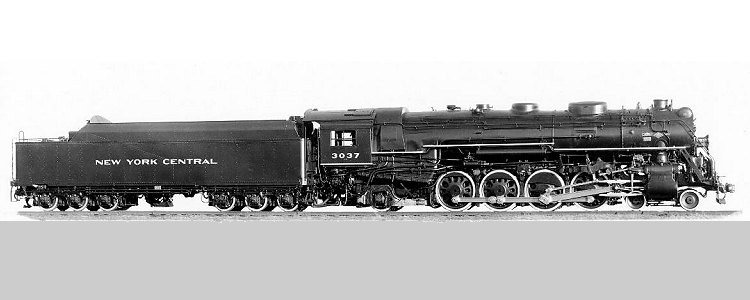In the early 1940s the New York Central added another 115 4-8-2s to its fleet of Mohawks in classes L-3 and L-4, bringing the total number to 600 (minus any L-1s that were scrapped before 1944). Lima Locomotive Works built 15 engines of class L-3b, Nos. 3035-3049, in 1940, with ALCo supplying Nos. 3025-3034. A final group, Nos. 3050-3064 of class L-3c, came from ALCo in 1942. These Mohawks weighed 393,500 pounds and mustered a tractive effort of 60,100 pounds, with a booster adding 14,000 pounds They had 25½x30-inch cylinders, a boiler pressure of 250 p.s.i., and 69-inch Boxpok disc drivers. The L-3 Mohawks had a grate area of 75.3 square feet, an evaporative heating surface of 4676 square feet, and 2100 square feet of superheating surface.
Unlike the new power being ordered by most railroads at the time, the L-3s still featured the alligator-type crosshead. The NYC finally went for the multiple-bearing crosshead on the L-4b class of 1943, as well as the post-World War II Niagara 4-8-4s and the Pittsburgh & Lake Erie 2-8-4s. These newer Mohawks were primarily freight haulers for the "Water Level Route," but those with a cast-steel pilot were dual service engines and often saw passenger service. Their tenders were equipped to scoop water from the track pans along the New York Central's main lines. No. 3037, the "poster child" for Lima's L-3b group, was retired in 1956. Click here for the Lima builder's photo in three-quarters view.
